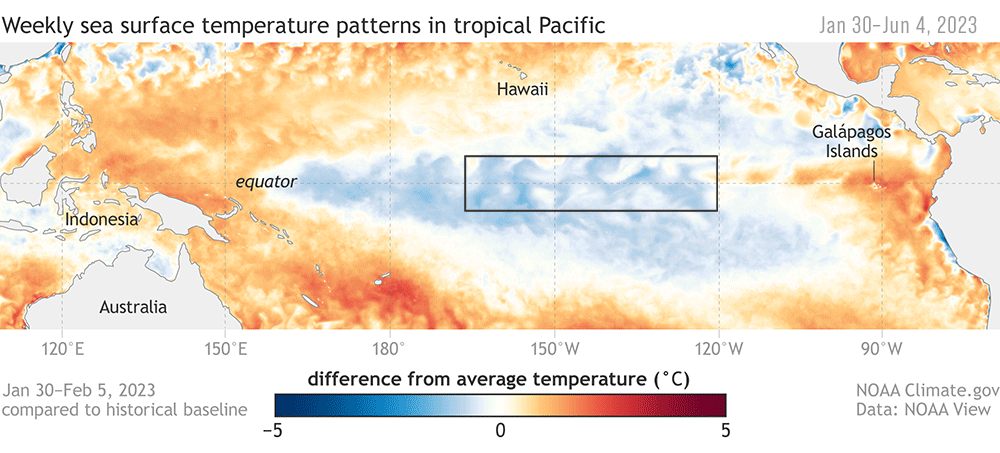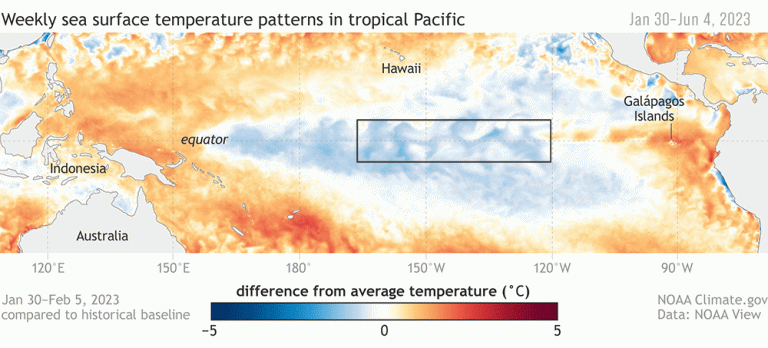It is expected to be moderate to strong by late fall/early winter

June 8, 2023 – A predicted El Niño event has developed, according to scientists at the National Oceanic and Atmospheric Administration (NOAA) Climate Prediction Center, a division of the National Weather Service. In the monthly forecast released today, forecasters issued an El Niño warning, noting that El Niño conditions exist and are expected to gradually intensify in the winter.
El Niño is a natural climate phenomenon characterized by warmer than average sea surface temperatures in the central and eastern Pacific Ocean near the equator, which occurs on average every 2-7 years. El Niño's effects on climate extend far beyond the Pacific Ocean.
“Depending on its strength, El Niño can cause a range of impacts, such as increasing the risk of heavy rainfall and drought in certain locations around the world,” said Michele Lloreux, a climate scientist at the Climate Prediction Centre. “Climate change can exacerbate or mitigate some of the impacts associated with El Niño. For example, El Niño can set new temperature records, especially in areas that already see above-average temperatures during El Niño.” ”
The effect of the El Niño phenomenon on the United States is weak during the summer and is most pronounced from late fall until spring. By winter, there is an 84% chance of a stronger than moderate El Niño, and a 56% chance of a strong El Niño. Typically, moderate to strong El Niño conditions during the fall and winter result in wetter than average conditions from Southern California to along the Gulf Coast and drier than average conditions in the Pacific Northwest and Ohio Valley. El Nino winters also bring better chances for warmer than average temperatures throughout the northern tier of the country.
No single El Niño event will cause all of these effects, but El Niño increases the likelihood of them occurring.
The expected continuation of El Niño also contributed to the 2023 Atlantic and Eastern Pacific hurricane outlook released by the National Oceanic and Atmospheric Administration (NOAA) last month. El Niño conditions usually help suppress Atlantic hurricane activity, while the presence of El Niño usually favors strong hurricane activity in the central and eastern Pacific basins.
The Climate Prediction Center's forecasts of seasonal temperatures and precipitation will continue to take into account current and projected El Niño conditions. This seasonal forecast is updated monthly, with the next update on June 15. The Atlantic hurricane season forecast will be updated in early August.
Scientists have been predicting the development of El Niño over the past few months and issued the first report on El Niño on April 13.
Media contact
John Moore, (202) 603-2523

